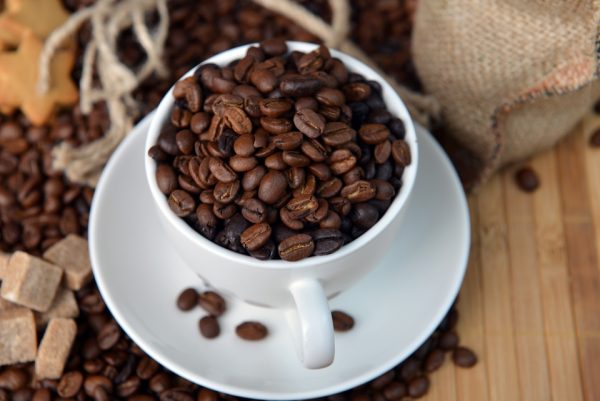Are you a coffee lover wondering what the most widespread type of coffee is? You’re not alone! Coffee is one of the most popular beverages in the world, with millions of people consuming it daily. The answer to this question is not straightforward, as there are many different types of coffee beans, each with its unique flavor and characteristics. However, according to the latest research, Arabica coffee is the most widespread type of coffee, accounting for 60% of the world’s coffee production.
Arabica coffee is grown in many countries worldwide, including Brazil, Colombia, and Ethiopia. It is known for its mild taste, low acidity, and delicate aroma, making it a popular choice among coffee lovers who prefer a smoother and less bitter taste. In contrast, Robusta coffee is the second most popular type of coffee, accounting for 39% of the world’s coffee production. It is grown mainly in Africa and Asia and is known for its strong and bitter taste, high caffeine content, and thick crema.
Types of Coffee Beans
When it comes to coffee, there are four main types of coffee beans: Arabica, Robusta, Liberica, and Excelsa. Each type of coffee bean has its own unique flavor, aroma, and characteristics.
Arabica
Arabica coffee beans are the most widely consumed and most popular type of coffee bean in the world, accounting for about 60% of the world’s coffee production. Arabica beans are grown at higher altitudes and in cooler climates, resulting in a more complex and nuanced flavor profile. They have a lower caffeine content than Robusta beans, with about 12 milligrams of caffeine per gram.
Robusta
Robusta coffee beans are the second most popular type of coffee bean, accounting for about 39% of the world’s coffee production. Robusta beans have a higher caffeine content than Arabica beans, with about 22 milligrams of caffeine per gram. They are grown at lower altitudes and in warmer climates, resulting in a more bitter and earthy flavor profile. Robusta beans are often used in espresso blends for their strong and bold flavor.
Liberica
Liberica coffee beans are a less common type of coffee bean, accounting for less than 1% of the world’s coffee production. Liberica beans have a distinctively fruity and floral flavor profile, with hints of smokiness. They are grown primarily in Southeast Asia and the Philippines.
Excelsa
Excelsa coffee beans are another less common type of coffee bean, accounting for less than 1% of the world’s coffee production. Excelsa beans have a tart and fruity flavor profile, with hints of dark chocolate and spice. They are grown primarily in Southeast Asia and are often used in blends to add complexity to the flavor profile.
In summary, Arabica and Robusta are the most widely consumed types of coffee beans, with Liberica and Excelsa being less common. Each type of coffee bean has its own unique flavor and characteristics, and the type of bean used can greatly impact the flavor profile of the coffee.
The Most Widespread Type of Coffee
If you’re a coffee drinker, you may have wondered what is the most widespread type of coffee. According to various sources, the answer is Arabica coffee. Arabica coffee is the most commonly grown and consumed coffee in the world. In fact, it accounts for more than 60% of the global coffee production.
Why Arabica Is the Most Widespread
Arabica coffee is highly sought after because it has a mild and smooth taste. It is less bitter and acidic compared to other types of coffee. Additionally, Arabica coffee has a pleasant aroma that makes it a favorite among coffee enthusiasts.
Arabica coffee is grown in many countries around the world, including Brazil, Colombia, Ethiopia, and Guatemala. It requires a specific climate and altitude to grow, which limits its cultivation to certain regions. However, its popularity has led to the development of new strains that can be grown in different climates.
Arabica’s Popularity
Arabica coffee’s popularity can be attributed to its taste, aroma, and availability. It is often used in specialty coffee shops and is a staple in many households. Arabica coffee is also used in many coffee blends and is a primary ingredient in instant coffee.
While Arabica coffee is the most widespread type of coffee, there are other types that are also popular. Robusta coffee, for example, is the second most commonly grown coffee and is known for its high caffeine content. However, it is often considered to have a more harsh and bitter taste compared to Arabica coffee.
In conclusion, Arabica coffee is the most widespread type of coffee in the world. Its mild taste, pleasant aroma, and availability make it a favorite among coffee drinkers.
The Coffee Industry Today
Global Coffee Consumption
Coffee is one of the most popular beverages in the world, with millions of people consuming it every day. According to coffee industry statistics, Brazil is the largest producer of coffee, followed by Vietnam, Colombia, and Indonesia. All of the world’s 10 leading coffee-consuming countries are in Europe, with the Finnish being the world’s greatest coffee consumers.
In the United States, coffee is the most popular beverage, with 64% of Americans drinking at least one cup of coffee per day. In fact, the US coffee market is expected to reach $25.7 billion by 2025, according to Statista.
Impact of Coffee on Economy
The coffee industry has a significant impact on the global economy. It is estimated that the coffee industry generates over $200 billion in revenue each year, providing millions of jobs around the world. In the US alone, the coffee industry employs over 1.7 million people.
Coffee is a major export for many countries, with some relying heavily on coffee exports for their economy. For example, in 2019, coffee accounted for 25% of Ethiopia’s export earnings, according to the International Coffee Organization.
In addition to its economic impact, coffee also has significant social and cultural importance. It is often enjoyed as a social beverage, with coffee shops and cafes serving as popular meeting places for people to gather and socialize.
Overall, the coffee industry is a significant player in the global economy and continues to be a beloved beverage around the world.
Conclusion
Now that you have learned about the most widespread type of coffee, you may be wondering which type is best for you. Keep in mind that taste is subjective, and what one person enjoys may not be the same for another. However, Arabica coffee is known for its mild flavor and low acidity, making it a popular choice for many coffee drinkers.
If you’re looking for a strong and bold flavor, Robusta coffee may be more up your alley. This type of coffee has a higher caffeine content and a stronger taste, but it also has a higher acidity level.
Other types of coffee, such as Liberica and Excelsa, are less common but still have their own unique flavors and characteristics. It’s worth trying different types of coffee to find the one that suits your taste buds the best.
No matter what type of coffee you choose, it’s important to consider the quality of the beans. Look for high-quality, freshly roasted beans for the best taste and aroma. And don’t forget to experiment with different brewing methods to find the perfect cup of coffee for you.
In conclusion, Arabica coffee is the most widespread type of coffee, making up 60% to 75% of the global coffee production. However, there are many other types of coffee that are worth exploring to find the one that suits your taste preferences.
Frequently Asked Questions
What are some popular types of coffee?
Coffee comes in a variety of types, each with its own unique flavor and aroma. Some popular types of coffee include espresso, Americano, black coffee, cappuccino, latte, flat white, cafe au lait, macchiato, cold brew, and frappe. Espresso is a concentrated coffee drink made by forcing hot water through finely ground coffee beans. Americano is a simple coffee drink made by adding hot water to espresso. Black coffee is a simple coffee drink made by brewing coffee without adding any milk or cream. Cappuccino is a coffee drink made by combining espresso with steamed milk and foam. Latte is a coffee drink made by combining espresso with steamed milk and a small amount of foam. Flat white is a coffee drink made by combining espresso with microfoam milk. Cafe au lait is a coffee drink made by combining brewed coffee with hot milk. Macchiato is a coffee drink made by combining espresso with a small amount of steamed milk and foam. Cold brew is a coffee drink made by steeping coffee grounds in cold water for an extended period of time. Frappe is a coffee drink made by blending coffee with ice, milk, and sweetener.
What type of coffee is commonly used in cafes?
Cafes typically use a variety of coffee types, depending on the region and the cafe’s preference. However, espresso is the most commonly used coffee type in cafes. Espresso is a concentrated coffee drink made by forcing hot water through finely ground coffee beans. It is the base for many coffee drinks, including cappuccino, latte, and macchiato.
What is the most common coffee variety?
Arabica and Robusta are the two most common coffee varieties. Arabica is the most widely consumed coffee variety, accounting for 60% of the world’s coffee production. It is known for its mild, sweet flavor and low acidity. Robusta is the second most popular coffee variety, accounting for 39% of the world’s coffee production. It is known for its strong, bitter flavor and high caffeine content.
What is the most popular coffee bean?
The most popular coffee bean is the Arabica bean. Arabica beans are known for their mild, sweet flavor and low acidity. They are grown in many countries, including Brazil, Colombia, Ethiopia, and Guatemala.
What are the most commonly used coffee beans?
The most commonly used coffee beans are Arabica and Robusta. Arabica beans are known for their mild, sweet flavor and low acidity, while Robusta beans are known for their strong, bitter flavor and high caffeine content. The ratio of Arabica to Robusta beans used in coffee blends varies depending on the coffee roaster’s preference.
What is the most widely consumed coffee?
The most widely consumed coffee is black coffee. Black coffee is a simple coffee drink made by brewing coffee without adding any milk or cream. It is a popular choice among coffee drinkers who prefer a strong, bold flavor.

